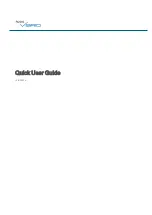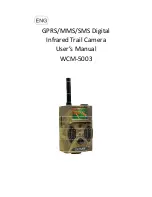
3
En
gl
is
h
Wireless Rechargeable Security Camera
Art.no 36-4819
Model DW-904S
Please read the entire instruction manual before use and save it for future reference.
We reserve the right for any errors in text or images and for making any necessary
technical changes to this document. If you should have any questions concerning
technical problems please contact our Customer Services.
Important details:
• The use of surveillance cameras in public areas is regulated by the Data Protection
Act 1998 and requires the permission of your local authority. The use of camera
surveillance on private property is also regulated by the Data Protection Act.
No permission is required from the local authority, but those monitored must
be informed that they are under surveillance. The Information Commissioner’s
Office has compiled a Code of Practice governing the use of security cameras.
For further information visit www.ico.gov.uk.
• Other wireless equipment using the same frequency can reduce the transmission range.
• The range of all wireless equipment depends on the type of obstacles located
between the transmitter and the receiver (e.g. a concrete wall will interfere with
the signal more than a plasterboard wall).
If you experience problems, try the following:
• Turn off any existing wireless equipment to see if this could be the cause of
the problem.
• Move the wireless equipment and/or shorten the distance and reduce the number
of obstacles (walls, furniture, etc) between the transmitter and receiver.
Safety
• The product should not be taken apart or modified. Certain exposed parts inside
the casing carry dangerous current. Touching these can lead to fire or electric shock.
• Do not cover the product. Adequate ventilation with a distance of at least 15 cm
between ventilation holes and the surrounding area is necessary to prevent
the device from becoming too warm.
• Use only the included or recommended mains adaptor.
• Ensure that the power supply to the mains adaptor is 230 V/50 Hz.
• Do not place the product where there is a risk of it falling into water or other liquid.
Do not place any objects which contain liquid onto the product such as vases,
drinks, etc.
• Do not expose the product to high temperatures or direct sunlight.
• Never subject the product to high temperature, dust, heavy vibration, impacts,
humidity or moisture.




































